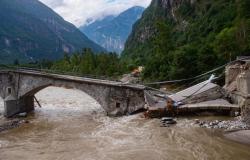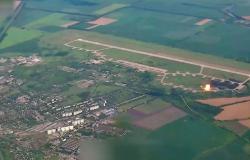The Israeli army bombarded the Gaza Strip on Tuesday, an attack that came after evacuation orders forced hundreds of residents to flee several areas in the south of the Palestinian territory devastated by nearly nine months of war.
Eight people died and more than thirty wounded arrived at Nasser Hospital in Khan Younis, Palestinian Red Crescent workers and a medical source at the health facility, after Israeli bombings in Khan Younis and Rafah (southern Gaza Strip), according to reports.
An AFP journalist and witnesses reported a multitude of Israeli strikes Tuesday morning against Khan Younis and its surroundings. The Israeli army indicated for its part that its operations were continuing in Shujaiya (north), Rafah and in the center of Gaza, after having ordered on Monday a new evacuation of sectors in the south of the territory, where hundreds of thousands of Palestinians had already had to flee the fighting several weeks ago.
Witnesses said that many residents had left these areas, and that displaced people from eastern Khan Younis, including children and elderly people, were sleeping on the ground in the streets.
“Combat difficile”
AFP footage showed displaced families fleeing again amid the ruins in Khan Younis, on foot or crammed onto trailers. Israeli Prime Minister Benjamin Netanyahu acknowledged Sunday that the army was fighting a “difficult fight” in the Gaza Strip, nearly nine months into the war sparked by an unprecedented attack by Hamas inside Israel on October 7.
“We are moving towards the end of the phase of eliminating the terrorist army of Hamas,” he said on Monday, after having said more than a week ago that the “intense” phase of the war was coming to an end.
“We have heard the Israelis talk about a significant reduction in their operations in the Gaza Strip. That remains to be seen,” said US Secretary of State Antony Blinken. After launching a ground offensive on October 27 in the north of the Palestinian territory, the Israeli army has gradually moved south, ordering the population to evacuate the targeted areas.
On May 7, it launched a ground operation in Rafah, a town on the border with Egypt, then presented as the final stage of the war against the Islamist movement, forcing a million Palestinians to flee, according to the UN. But in recent weeks, the fighting has again gained in intensity in several regions that the army had said it controlled, notably in the north, while the offensive continues in Rafah.
“No place to stay”
The new evacuation orders for several areas in the south of the territory came a few hours after the Islamic Jihad, another Palestinian armed group, claimed responsibility for rocket fire toward Israel on Monday. The army said Tuesday that it had targeted the source of the previous day’s fire, in the vicinity of Khan Younis. A weapons warehouse, operational centers and other “terrorist infrastructure” were targeted, according to the same source.
In the north, the Israeli army continued operations launched on June 27 in Shujaiya, a neighborhood in eastern Gaza City where it said it had eliminated “numerous terrorists.” An AFP correspondent reported new bombings on Tuesday in this neighborhood, as well as in Zeitoun, also in Gaza City.
Between 60,000 and 80,000 people, according to the UN, have fled the east and northeast of Gaza City in recent days. “We fled Shujaiya. The situation is very difficult. We have no place to stay. We keep looking for water, but we can’t find any,” said a Palestinian who sought refuge in western Gaza City.
Accusations of “torture”
On Monday, dozens of Palestinian prisoners, including the director of Gaza City’s al-Shifa hospital, Mohammed Abu Salmiya, were released by Israel and transferred to Gaza hospitals, according to a medical source. Salmiya said he had been subjected to “severe torture” during his seven months in detention.
In Israel, Mr Netanyahu denounced the release as a “grave mistake”, saying that “the place of this man, under whose responsibility our hostages were killed and held, is in prison”, with the Shin Bet (Internal Security) citing a means “to free up space” in prisons.
The Hamas attack on October 7 resulted in the deaths of 1,195 people, mostly civilians, according to an AFP tally based on official Israeli data. Of the 251 people kidnapped during the attack, 116 are still being held hostage in Gaza, of whom 42 are dead, according to the army.
In retaliation, the Israeli army launched an offensive in the Gaza Strip that has so far killed 37,900 people, mostly civilians, according to data from the Hamas-run Gaza government’s health ministry. The war has caused massive population displacement and a humanitarian disaster in the besieged Gaza Strip, where water and food are in short supply. Thousands of children are suffering from malnutrition, according to the World Health Organization.
Mr Netanyahu says he wants to continue the war until Hamas, considered a terrorist organisation by Israel, the United States and the European Union, is eliminated and the hostages are freed. Hamas, which has ruled the Gaza Strip since 2007, has been demanding a permanent ceasefire and an Israeli withdrawal from the territory.
This article was published automatically. Sources: ats / afp






